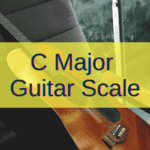“Pop music” is a label that has been stamped on countless songs throughout the past century.
You can put anything between U2, The Chemical Brothers, Snoop Dogg, Blink 182, and Creedence Clearwater Revival under that category and it will make sense.
But why is it that all this musical diversity can co-exist under this one label?
Well, the only thing that pop requires from artists is that they keep the genre up in the charts by carefully crafting hit songs that people can relate to or dance to.
So, these are the perfect chord progressions you should start including in your music to grab attention and climb those charts.
These progressions add to the chances of songs turning into hits.
Remember, if it’s a hit, then it can be under the pop music umbrella.
Major and Minor Scales in Pop Music
Major and minor scales have a particular sound of their own.
Indeed, the way the chords are laid out makes a big difference when composing. Perhaps, in that vein, the biggest difference is that the root chord is a minor in minor scales and a major in major scales.
I know, you might be thinking “Duh! I already know that dude!”
Well, I’m glad you do, because we’re going to take that concept and make it work in our favor to create better songs.
So, to begin with, let’s define the role of the I chord or root chord.
This chord is what we call “home”, where the progression moves toward, the chord that will lead the chorus and other important parts of the song.
Let’s take a look at the structure of a minor and a major scale to see this difference I’m talking about:
| Major Scale | ||||||
| I | II | III | IV | V | VI | VII |
| Major | Minor | Minor | Major | Major | Minor | Diminished |
| Minor Scale | ||||||
| I | II | III | IV | V | VI | VII |
| Minor | Diminished | Major | Minor | Minor | Major | Major |
Here are the empty structures of the major and the minor scale. With these structures and the notes on every key or scale, you can transform the Roman numerals into actual chords. For example, if you were to create the C Major and the A minor scales (the only ones with no accidents, AKA, flats and sharps), you would have something like this:
| C Major Scale | ||||||
| I | II | III | IV | V | VI | VII |
| C | Dm | Em | F | G | Am | B Diminished |
| A Minor Scale | ||||||
| I | II | III | IV | V | VI | VII |
| Am | B Diminished | C | Dm | Em | F | G |
But why are major and minor scales important to make pop music?
Well, the key is what you want to convey; what story are your chords ready to tell.
For example, a very common resource is to use minor chords (or progressions) for verses and major chords for choruses.
This juxtaposition of emotions creates tension in the verses which can be accompanied by lyrics that unravel a touchy, sensitive, personal story.
By using major chords in the chorus, you can not only solve tension but also bring the entire composition to the next level.
Another great approach can be using a minor chord among major chords for the chorus so it can have a sort of mixed feeling, kind of a bittersweet taste.
This single minor chord can easily be the reason people resonate with your song.
On the other hand, it won’t work if you’re trying to create a party anthem.
Moving from Major to Minor and Vice Versa
How do we move from a major to a minor scale in the same song without losing the cohesive element?
Well, let’s take a look at the best way to do it without adding a bunch of chords to our progression.
Yes, this is a secret I was told many years ago, and now it’s my turn to pass it on to you.
I call this move the pivotal chord.
To pull off the pivotal chord and move from one scale to another, you need to find a chord that belongs to both scales.
But how do you know what chord is on what scale? Do you have to learn them all by heart?
Don’t worry, the answer to those questions is no.
There’s a much easier way to do it and is called the Circle of Fifths.
This fancy name talks about a musical phenomenon that repeats throughout the 12 scales or keys.
It means that there’s a major and a minor scale that shares the same chords in different positions.
A great example (the quintessential example) is the relationship between C major and A minor.
If you take a closer look at the scales above, you’ll realize every chord is the same, they’re just obeying a different distribution.
For example, you could play a Dm chord and move from C major to A minor with it.
But what if I want to take this further? Can I use any chord to move to another scale? Well, the answer is yes.
For example, you could use the same Dm chord to move to the D Minor scale knowing that Dm is the root chord of the scale.
Where do you go from there? Just follow the formula and put chords on each Roman numeral in the chord progression.
Let’s Talk Production and Instrumentation
Now that you know what role minor and major scales play in making pop music and making number-one hit songs, it’s time to address sound and instrumentation.
To begin with, let’s say that pop music tends to be simplified when compared to other genres like jazz, but it always includes something that catches the listener’s attention.
Yes, that’s how these songs climb charts, by being memorable firstly, and cool secondly.
Bringing New Sounds to Old Schemes
Nothing sounds less hooky than what’s expected.
Indeed, if you’re trying to create a new anthem, it needs to have something that stands out from the pack.
Yes, your song needs to have something that’s perceived first as odd and then as awesome.
This can be anything from a tribal instrument (like Jamiroquai’s smash hit “Supersonic” using a didgeridoo) to actually teaming up with foreign talent and adding that vibe to the entire song (like Sting with Algerian singer Cheb Mami for the song “Desert Rose”).
The key here is to bring something surprising to the instrumentation of the song.
Moreover, nowadays most DAWs offer a nurtured library of sampled sounds from all over the planet.
Also, you can acquire a MIDI controller and just play with piano keys whatever instrument comes to mind.
Don’t be afraid to experiment with different sounds when thinking about the song’s main melody or theme.
This instrumentation needs to be completely aligned with the lyrics and the song feel.
Building The Best Hook Possible
Speaking of consonance and odd instruments, it’s paramount to talk about a “hook” when we talk about pop music.
Why is it necessary to talk about hooks? Well, because, as the name implies, you need it to bring the listener closer to your music.
But what is a “hook” in music? Let me give you an example: Do you remember “Bittersweet Symphony” by The Verve? Well, the hook on that song is the symphonic track behind the actual song.
In the example above, the band used the odd sound resource to hook listeners in (and it worked marvelously well, right?).
You wouldn’t expect a symphonic track to be behind this pop tune.
Another example that worked just as well, but with a completely different approach is “Walk This Way” by Run DMC and Aerosmith.
The riff is just so infectious and groovy that it can fit a traditional 808-and-scratch hip-hop base.
PRO TIP: Spend as much time as possible building the perfect hook. Don’t worry, sometimes, it will come easily and be the song’s main motif, on other occasions, it will require for you to reach out to other musical styles, instruments, or even guest appearances. Whichever is your hook of choice, bear in mind that it is one of the main ingredients for a perfect pop tune.
11 Pop Chord Progressions
- I – V – vi – IV
- I – vi – IV – V
- I – V – VI – V
- I – bVII – IV – I
- I – bVII – bVI – bVII
- I – IV – V
- vi – V – IV – III
- I – V – vi – iii – IV
- ii – V – I
- I – vi – iii – IV
- vi – IV – I – V
The Bottom End
Pop music is the broadest musical style in history.
It’s a label that has been given to songs going from metal to rap.
What matters the most in this category is how strong your hook is and how high your song climbs those charts.
Follow our chord progressions, add some of your creativity to the mix, and I’ll surely be seeing you on a big marquee somewhere around the world.
Happy (hook) playing!

Hello there, my name is Ramiro and I’ve been playing guitar for almost 20 years. I’m obsessed with everything gear-related and I thought it might be worth sharing it. From guitars, pedals, amps, and synths to studio gear and production tips, I hope you find what I post here useful, and I’ll try my best to keep it entertaining also.





